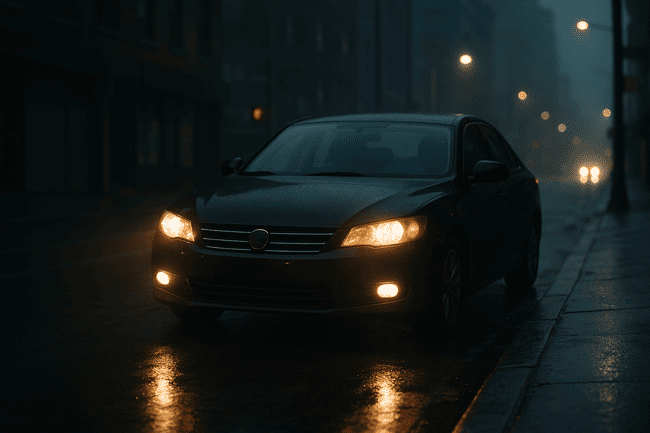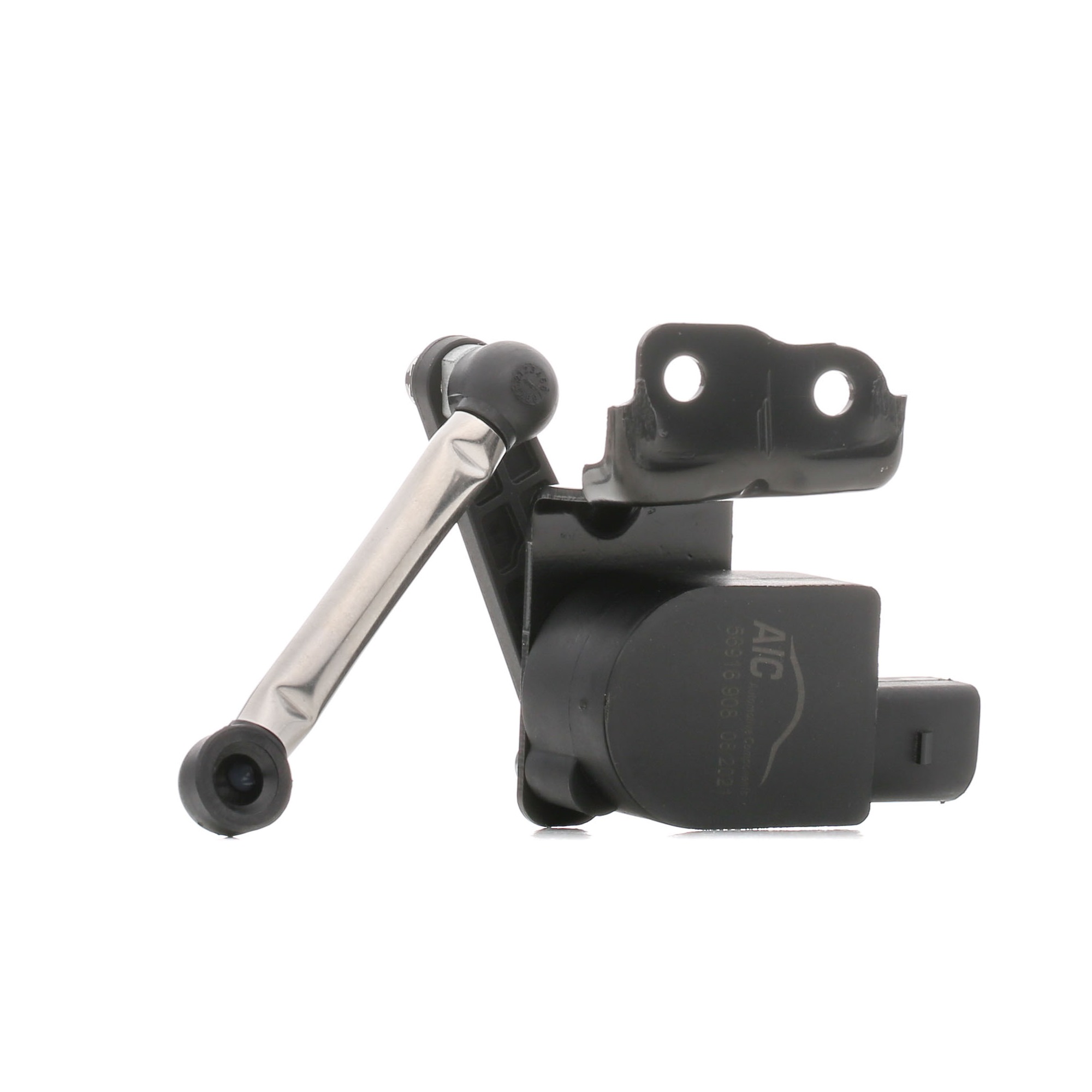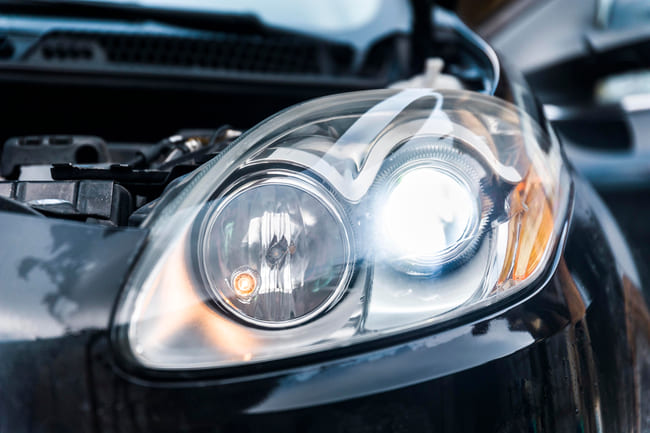Table of Contents
Xenon vs LED headlights: what's the difference and what to choose
Since the 1970s, halogen light bulbs have been a standard fixture in the automotive world. While many vehicles still come equipped with these warm, yellow-toned lights, they are gradually being phased out in favour of more modern alternatives. Today, Xenon and LED headlights are leading the way, offering improved brightness, greater energy efficiency, and longer lifespans. As vehicle lighting technology evolves, both manufacturers and drivers are making the switch to these advanced systems.
What is the difference between xenon and LED headlight bulbs?

Despite their higher initial cost, LEDs offer numerous advantages over xenon headlight technology. For example, LEDs illuminate instantly, while xenon bulbs require time to warm up and reach full brightness. LEDs also consume less energy, using 25–35% less power than xenon alternatives and reducing strain on vehicle electrical systems.
LED technology has a substantially longer lifespan, lasting over 20,000 hours compared to xenon's 2,000–3,000 hours. LEDs generate substantially less heat, enabling more flexible design options; on the other hand, xenon systems require more robust housing to manage their higher operating temperatures.
At a glance:
- LEDs consume 25–35% less power than xenon bulbs
- LEDs typically last 20,000+ hours compared to xenon's 2,000–3,000 hours
- Xenon bulbs produce significantly more heat
- LEDs offer more colour temperature options than xenon's more limited range
- Xenon systems require ballasts and sometimes additional wiring, while LED upgrades are often simpler plug-and-play solutions
Xenon bulbs
Also known as high-intensity discharge (HID) lamps, xenon headlamps emit a crisp white-blue light that closely resembles natural daylight. Like halogen bulbs, they contain gas, but instead of using a metal filament, HID lights rely on two electrodes. When an electric arc forms between these electrodes, it excites the gas and produces a bright, intense light.
One of the key benefits of xenon bulbs is their longevity. Without a fragile filament to burn out, xenon headlights typically last between 2,000 and 2,500 hours, significantly longer than the 400 to 1,000 hours of traditional halogen bulbs. In addition to their extended lifespan, xenon lights are also two to three times brighter, improving visibility on the road.
Xenon bulbs are available for both single beam and dual beam lighting systems. The dual beam versions known as bi-xenon bulbs combine high and low beam functions in a single unit.
Pros and cons of xenon bulbs:
| Pros | Cons |
|---|---|
| Superior light output and penetration | Require warm-up time to reach full brightness |
| Better visibility in poor weather conditions | Higher power consumption than LEDs |
| Longer throw distance than standard halogens | Produce significant heat requiring robust housing |
| Lower initial cost than LED systems | Shorter lifespan (2,000–3,000 hours) |
| Wide, even beam pattern for better peripheral vision | More complex installation requiring ballasts |


 AIC Sensor, Xenon light (headlight range adjustment)
Rear Axle Left, with coupling rod
AIC Sensor, Xenon light (headlight range adjustment)
Rear Axle Left, with coupling rod
 BOSCH Bulb, spotlight
H7 12V 55W PX26d, 4000K, Halogen
BOSCH Bulb, spotlight
H7 12V 55W PX26d, 4000K, Halogen
 BOSCH Bulb, spotlight
H7 12V 55W PX26d, 4200K, Halogen
BOSCH Bulb, spotlight
H7 12V 55W PX26d, 4200K, Halogen
LED bulbs
LED car head lights haven’t been around as long as their counterparts and, up until recently, have mostly been used in high-end, premium vehicles. They do not contain any gas but rather operate using what is known as solid state lighting technology. This essentially means that instead of emitting light from a vacuum or using gas, the light is emitted from a piece of solid matter - the light-emitting diode. The diode is a semiconductor that glows as an electric current passes through its microchip.
They have quickly become popular due to their energy efficiency and long-lasting light. As technology advances, LED headlight bulbs are becoming cheaper to produce. They typically generate less heat than incandescent bulbs and are able to illuminate a wider area.
With a lifespan of over 25,000 hours, LED headlights far surpass traditional halogen options, which last only 1,000 hours. They reach full brightness instantly, reduce strain on your vehicle's electrical system and offer customisable colour temperatures ranging from 3,000 K (warm yellow) to 6,000 K (cool white), improving visibility in various driving conditions.
Pros and cons of LED headlights:
| Pros | Cons |
|---|---|
| 25,000+ hour lifespan compared to Xenon's 2,000-3,000 hours | May not project as far as Xenon in certain conditions |
| No warm-up time versus Xenon's 5–10 second delay | Quality LED systems can cost more than entry-level Xenon kits |
| Uses 25–30% less power than Xenon, reducing battery drain | May require more modifications in vehicles designed for halogens |
| No external ballast required unlike Xenon's bulkier setup | Requires efficient heat sinks to prevent premature failure |
| Contains no mercury or toxic materials | Some lower-quality LEDs may dim gradually over their lifespan |
Xenon vs LED: Which type is better?

There are several advantages to both types, although LEDs typically perform better when it comes to energy consumption, size, and illumination. Both of them generate a very bright light, however, xenon front headlights are sometimes so bright that even the low beams can have a glaring effect on oncoming traffic. HID setups often feature a levelling system which automatically adjusts the light pattern to reduce glare.
In ideal conditions, LED lights can technically have a lifespan of up to 25,000 hours and consume at least 75% less energy than incandescent bulbs, such as halogen and xenon. They tend to be smaller and come in multiple different colours, allowing drivers to customise their headlights. On the other hand, the manufacturing costs for xenon lights are still much lower, making the components cheaper to replace.
Whichever you choose, xenon or LED headlights, you need to ensure that they can be installed on your car. Some cars that have a halogen light fitting will require the use of a HID or LED conversion kit. These are widely available on the aftermarket.
 BOSCH Bulb, spotlight
H7 12V 55W PX26d, 5000K, Halogen
BOSCH Bulb, spotlight
H7 12V 55W PX26d, 5000K, Halogen




Is it time to change your headlights?
If your car’s spotlight bulb or low beam headlight has burnt out, it’s important to replace it promptly. Not only is this essential for road safety, but it also ensures your vehicle remains compliant with legal requirements. Driving with a faulty headlight assembly can reduce visibility and significantly increase the risk of accidents, particularly in poor weather or low-light conditions.
Fortunately, shopping online makes it easy to find the right replacement. There is a wide range of car headlight bulbs available, allowing you to compare prices, specifications, and customer reviews before making a purchase. Trusted manufacturers such as HELLA, Philips, Bosch, and Valeo offer high-quality options suitable for most vehicle types.

Frequently Asked Questions
1. Can I replace halogen bulbs with xenon or LED headlights?
Yes, but it depends on your vehicle’s compatibility. Many cars with halogen fittings will require an HID or LED conversion kit to safely and legally install xenon or LED bulbs.
2. Are LED headlights legal in the UK?
LED headlights are legal as long as they are road-approved and correctly fitted. AUTODOC experts say you should always check for compliance with UK vehicle lighting regulations, especially when buying aftermarket bulbs.
3. Which headlights are better for night driving – xenon or LED?
Both offer excellent visibility, but LEDs tend to provide a wider and more even spread of light, making them particularly effective for night driving. Xenon bulbs, while powerful, may cause glare if not properly aligned.
Conclusion
As technology evolves, both xenon and LED headlamps continue to offer significant improvements over traditional halogen bulbs. Xenon lights are bright and affordable, while LEDs are energy-efficient, long-lasting, and stylish. The best option for your car ultimately depends on your driving needs, budget, and vehicle compatibility. Whichever you choose, ensure your lights are correctly installed and comply with UK road safety standards, as clear visibility is not just a convenience. It is a necessity.
A useful video on this topic:
How to Make Your Headlights Shine Like New Again
Top products related to this topic:










